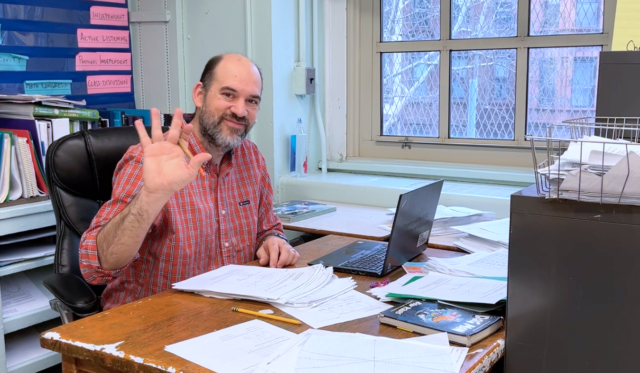Middle school math teachers are all too familiar with the perception that their subject is abstract, intimidating, and downright boring for many students. With 85% of his students reporting that they feel like they belong in his class, Steven Emmer, 8th grade math teacher at K035, has cultivated a safe space where math is real and relatable.
It’s better to solve one problem three ways than three problems one way.
A common assumption in math is that every problem has one correct answer. In our interview with Mr. Emmer, we noticed his openness to diverging from the lesson plan and to considering different ways to arrive at the answer. What stood out was the parallel between Mr. Emmer accepting multiple, diverse answers to math questions and his approach of accepting and including the diversity of students in his classroom. Just as there are many valid ways to solve a problem, there are many types of learners who belong.
Classroom belonging is also built into the lesson planning. Mr. Emmer carefully crafts his lessons using “low floor, high ceiling” problems. This allows students of all skill levels to access the initial task, then progress further as their abilities allow. He ensures everyone can engage with the material right away, then stretch their thinking. At the end of this article, find some examples of “low floor, high ceiling” problems Mr. Emmer was kind enough to share!
Our students are entering into a world where they need to be creative, and they have to come up with creative solutions.
Behind Mr.Emmer’s inclusive and student-centered teaching philosophy is a powerful why — he believes that in today’s increasingly complex world, students will need to think creatively and flexibly to solve new problems. Math is a creative subject that can help students develop these critical skills. By making his classroom a safe space to take risks and promoting diverse thinking, Mr. Emmer prepares students to approach problems with openness and innovation.
Low Floor, High Ceiling Problem Sets
The following two worksheets help students build understanding of linear growth through patterns visually and numerically. Notice how the questions scaffold!
This last worksheet helps teach geometric transformations through the lens of Dutch graphic artist M. C. Escher.
